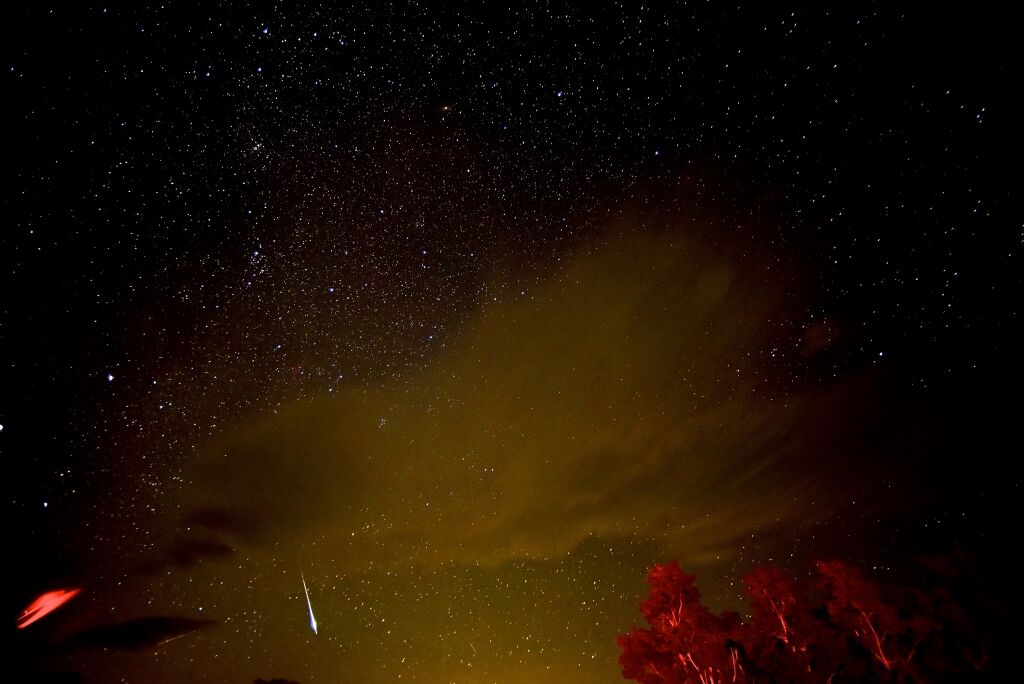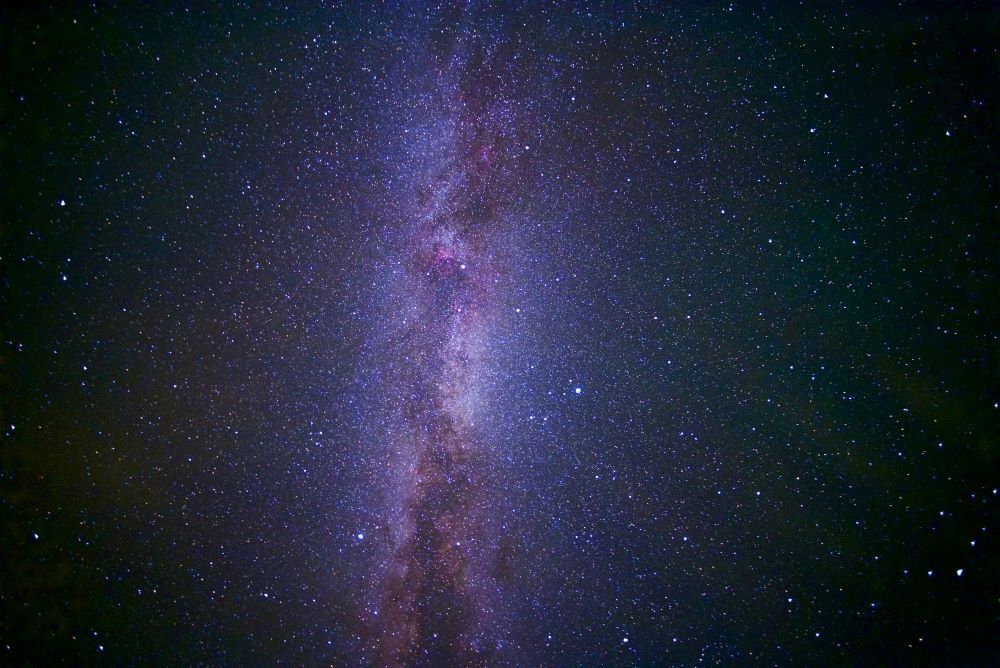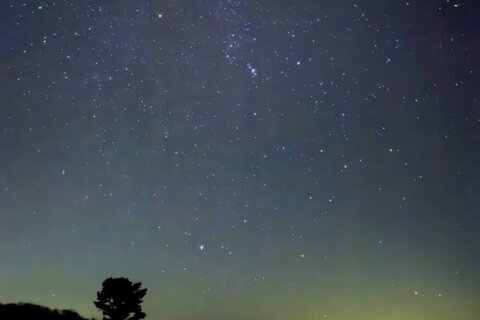The bright moonlight of the full sturgeon supermoon will affect the visibility of the Perseid meteor shower, but you should still be able to get a look at the annual meteor shower, starting at 11 p.m. Thursday.
The Perseids will peak Friday night and Saturday morning.

The best place to watch the Perseids is somewhere free of city lights that offers a clear view of the whole sky. Being comfortable is key to watching the shower.
At a dark sky site with no moon present, one can expect up to 100 meteors an hour at the predicted peak of the shower. This year, the bright and almost full moon will reduce the number to a predicted 30 to 50 per hour at a dark sky site.
Although the moon will be bright and interfere with the number of Perseids we can see this year, it is well worth looking anyway. The Perseids can produce bright meteors called fireballs — which are brighter than the planet Venus. Even skywatchers living in the city and suburbs can see these brighter meteors. Here are some tips to help you minimize the moon’s light while watching the Perseids.
Try your luck at photographing the Perseids. It is very easy to do with minimal equipment and experience. (Share your Perseid pix with WTOP on Twitter!)
The weather forecast for the D.C. area looks promising for the predicted peak of Friday night into Saturday morning. Even if there is some cloud cover, it is well worth getting out, because if only a few clouds are present, they can add to the overall beauty of the sky, especially fireballs.

Night Sky Festival at Shenandoah National Park
Are you are tired of the “Dog Days” of summer, which have been pretty brutal here in the D.C. area? Want to get away to cool breezes, lush greenery and star-filled skies?
Shenandoah National Park is always your answer, but now with an added bonus — the annual Night Sky Festival from Aug. 19 to Aug. 21. The Night Sky Festival will occur over the weekend rain or shine as it’s a family-friendly event with astronomy stuff for all ages.
Besides admission to the park, all events are free. Rooms can be booked, and there are places to eat to facilitate your stay.
Throughout the whole park, there will be presentations and other activities. If the weather cooperates, there will be telescopes available at night for festivalgoers to use, and properly filtered telescopes available during the day to view the sun.
(I’ll be at Big Meadows Visitor Center Sunday, Aug. 21, from 12 to 2 p.m. on to show you the sun and will also be giving two presentations there at 6 and 7 p.m.)
Due to light pollution, 80% of Americans cannot see the Milky Way galaxy, our home galaxy. At Shenandoah, especially this time of year, the Milky Way is a celestial splendor that can be seen sprawling across the sky from the south to the north. Many guests at the park have never seen it, and some are moved to tears when they see it for the first time. The moon will be out of the sky for this year’s festival, so the Milky Way will be at its best.
I hope you will join the Shenandoah staff and me at the Night Sky Festival. The park’s astronomy events continue throughout the season, too.
See you there!
Follow me on Twitter and my daily blog at to keep up with the latest news in astronomy and space exploration. You can email me at skyguyinva@gmail.com.







